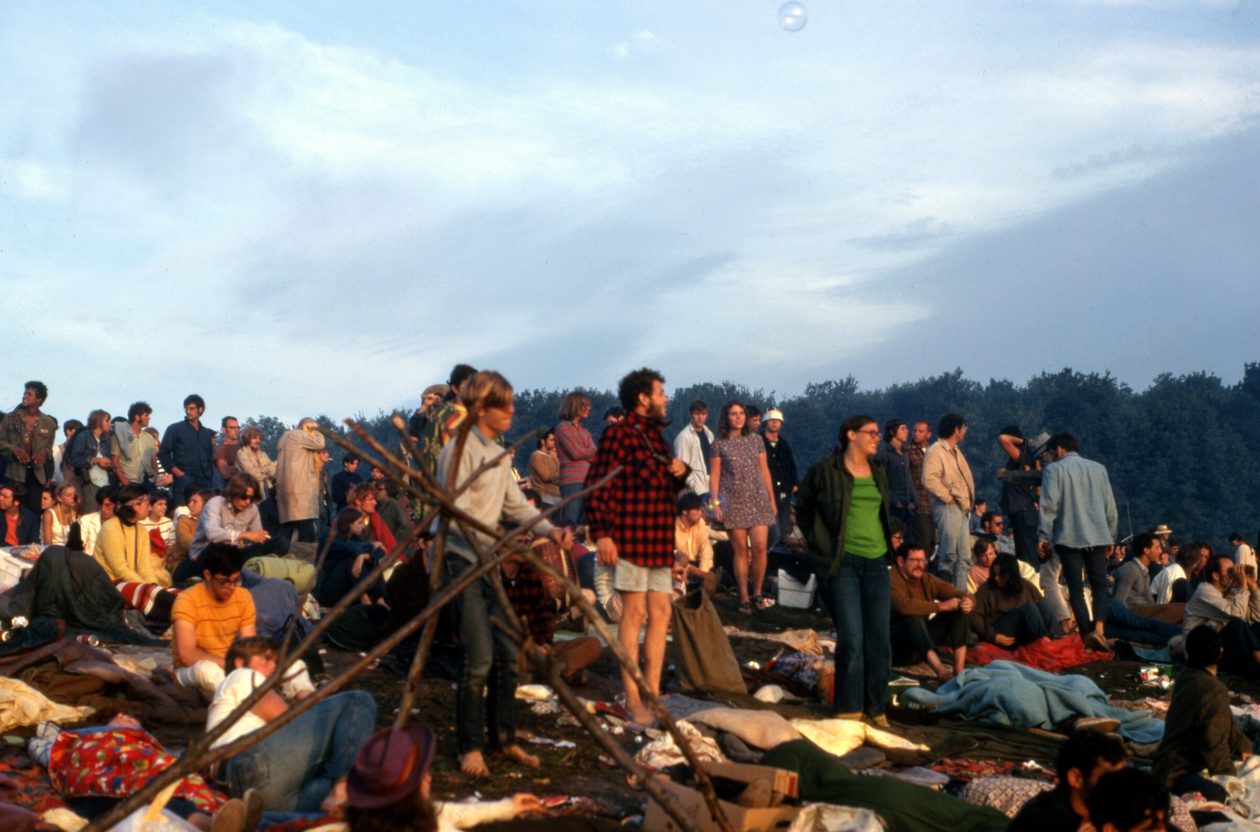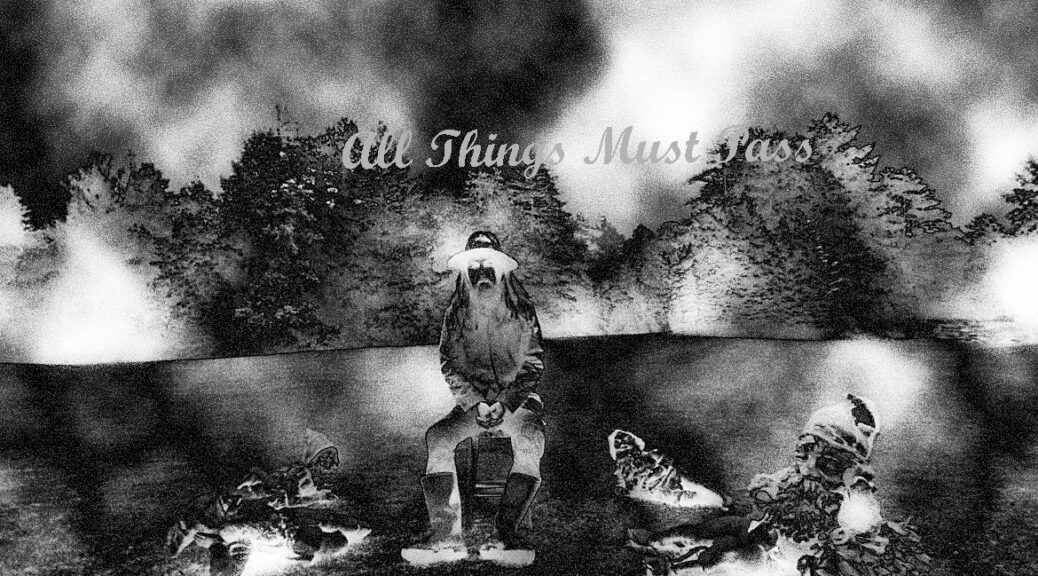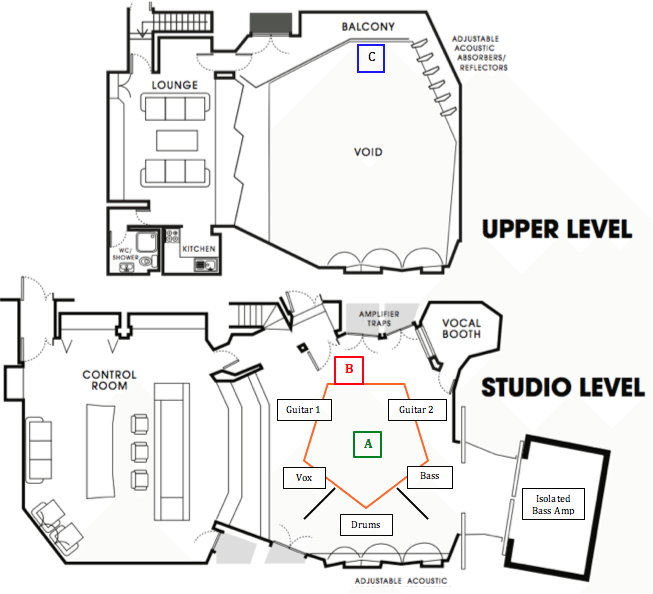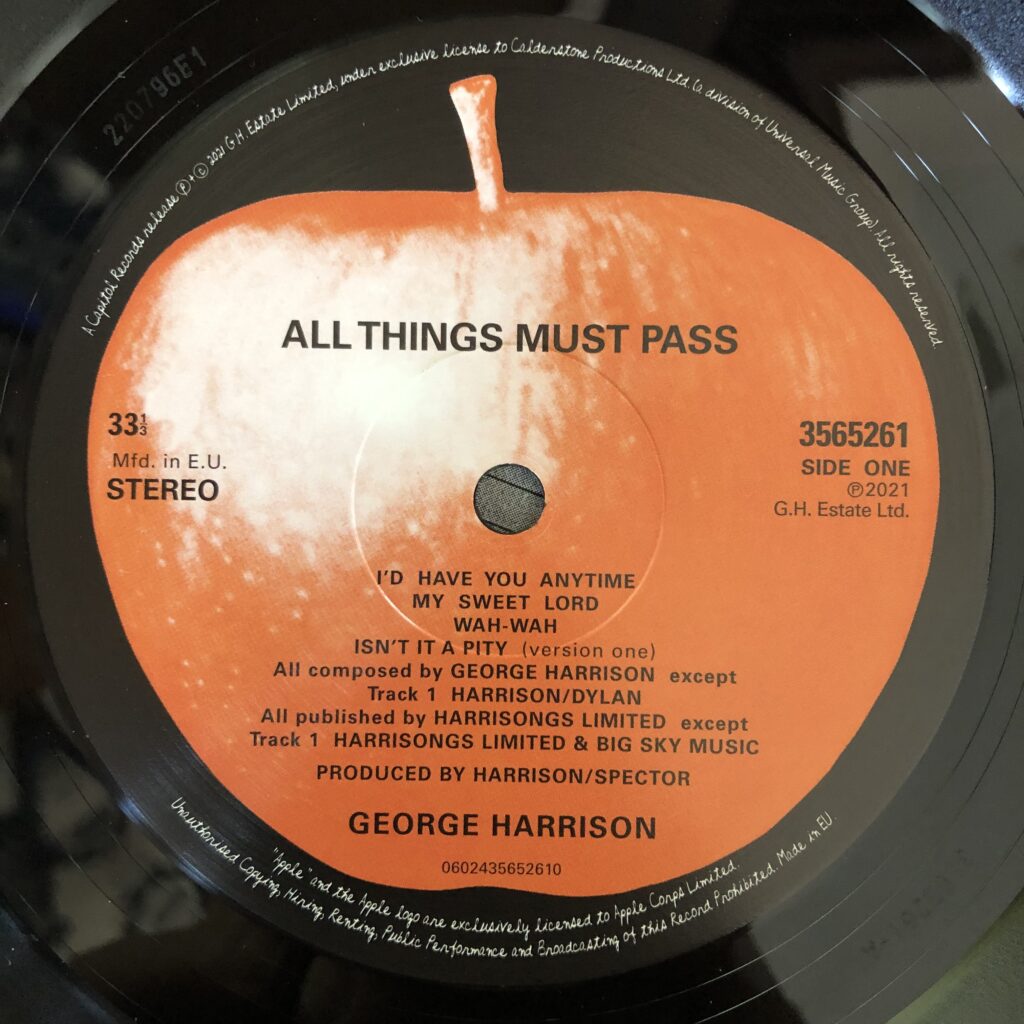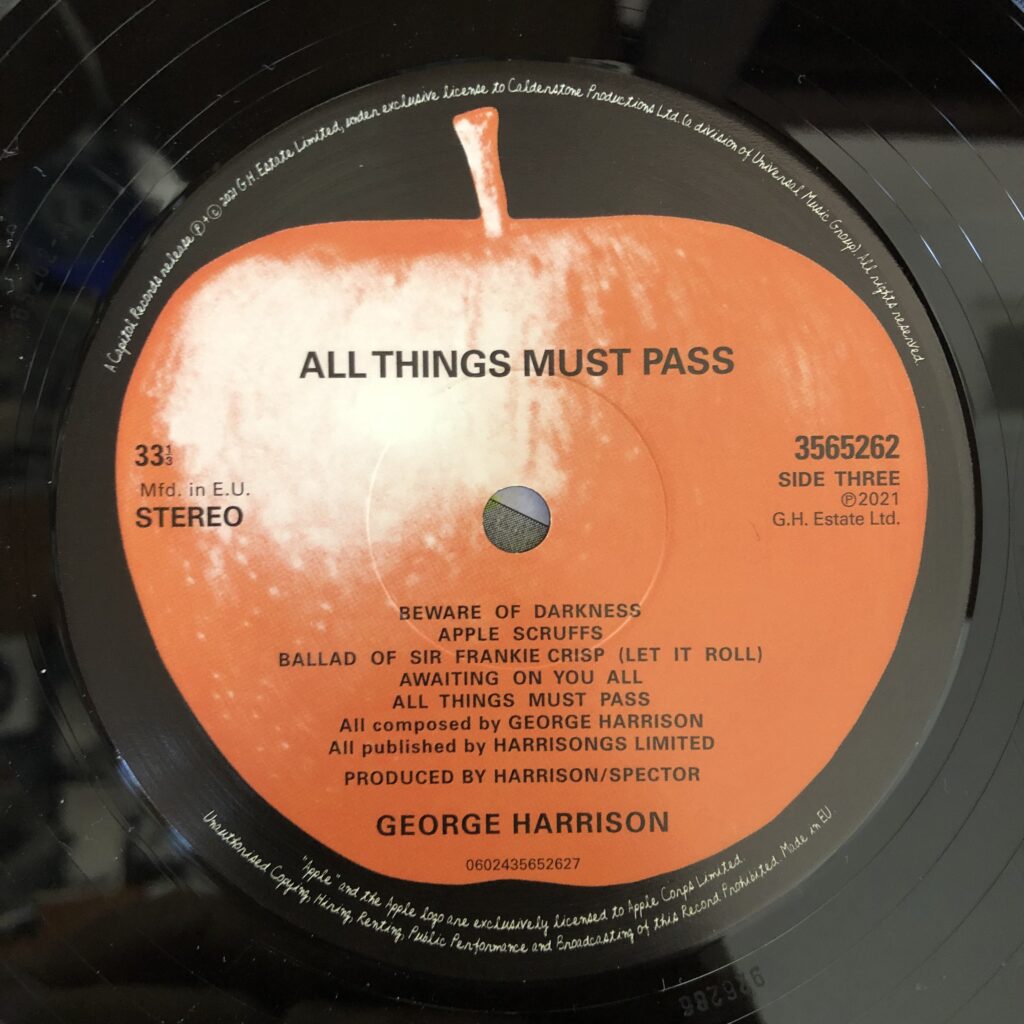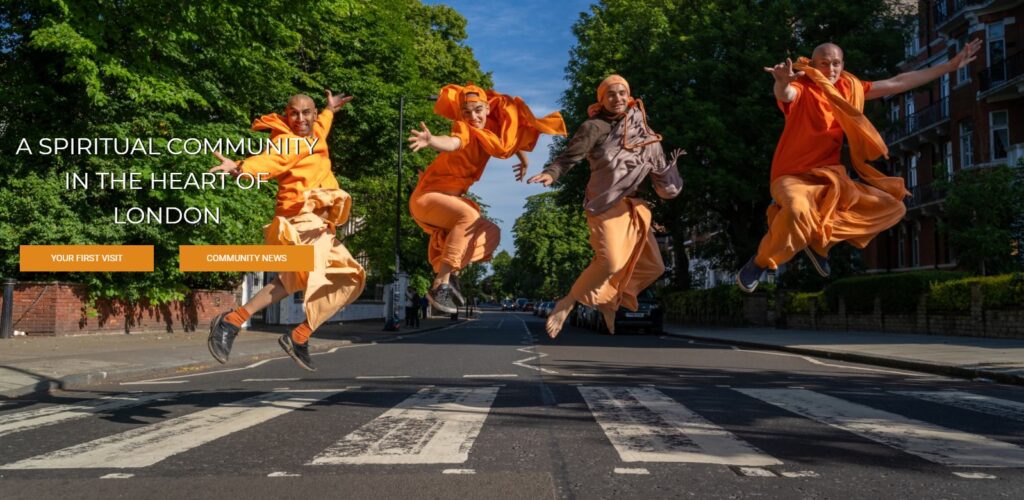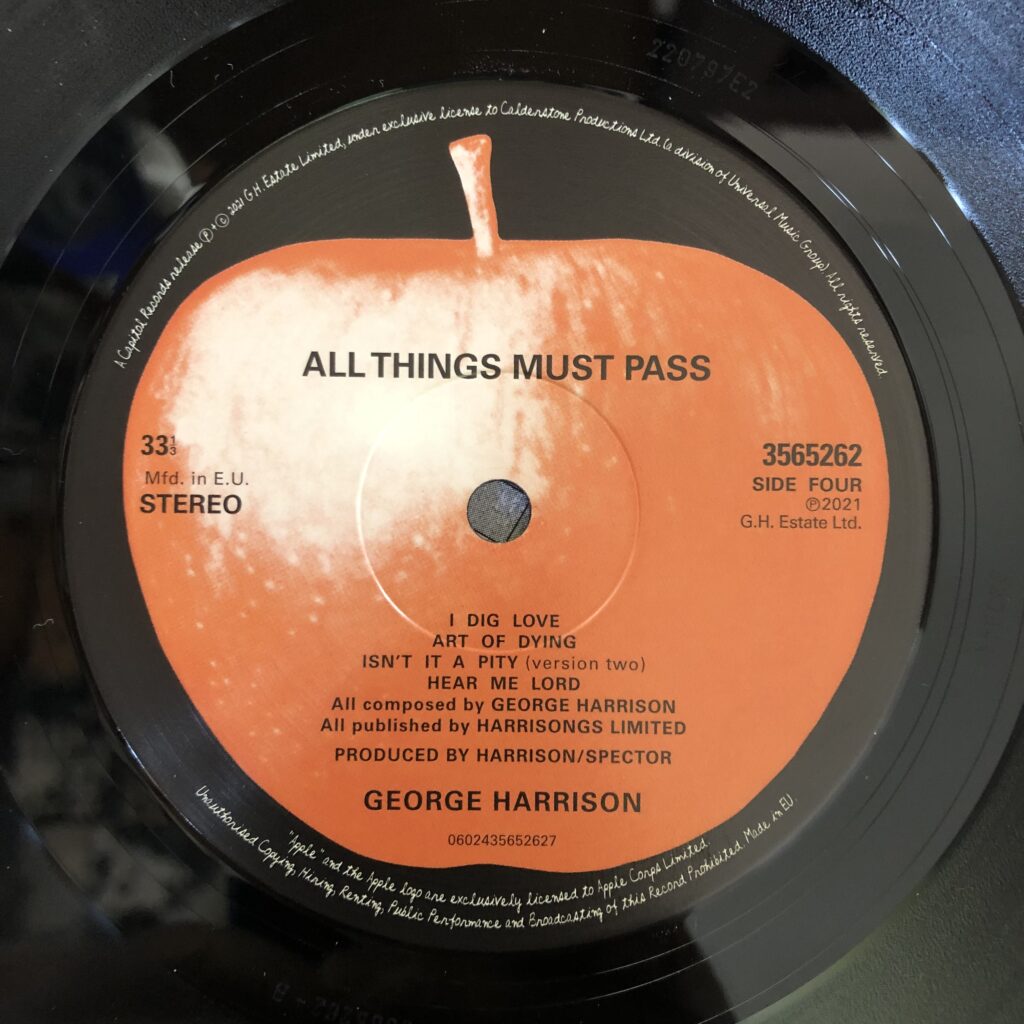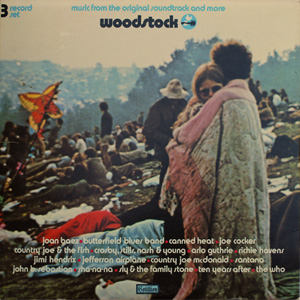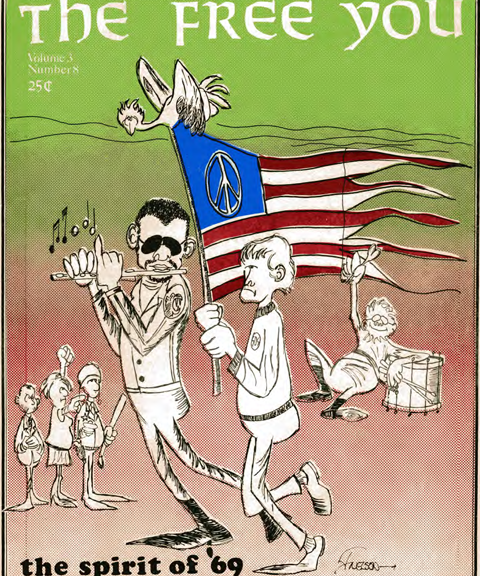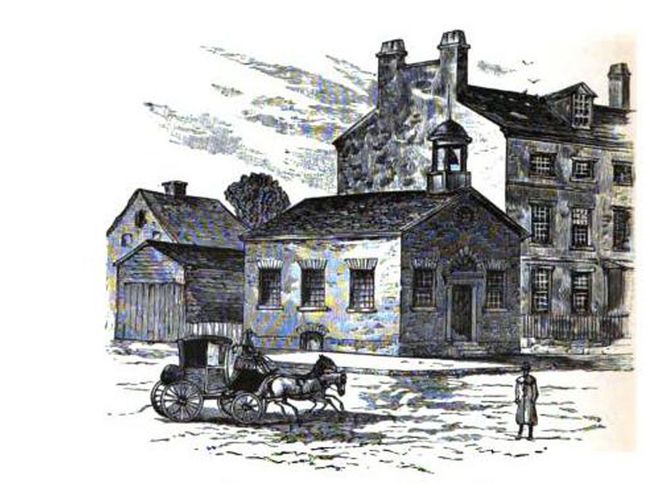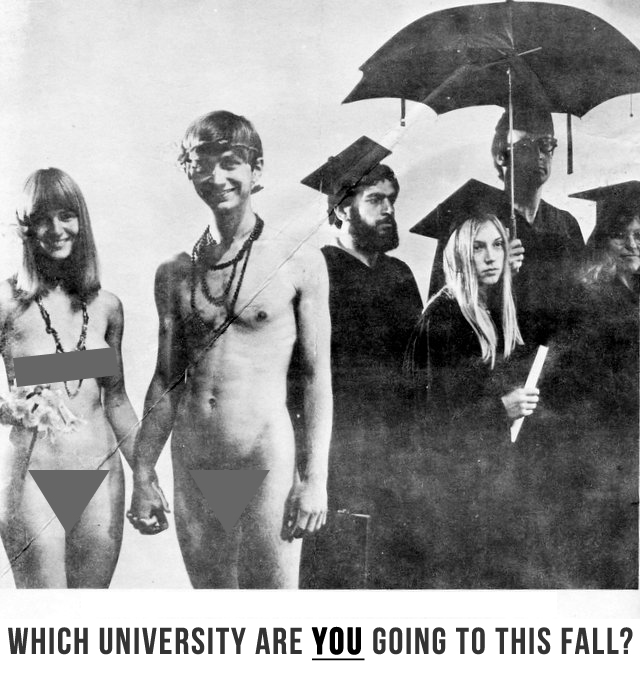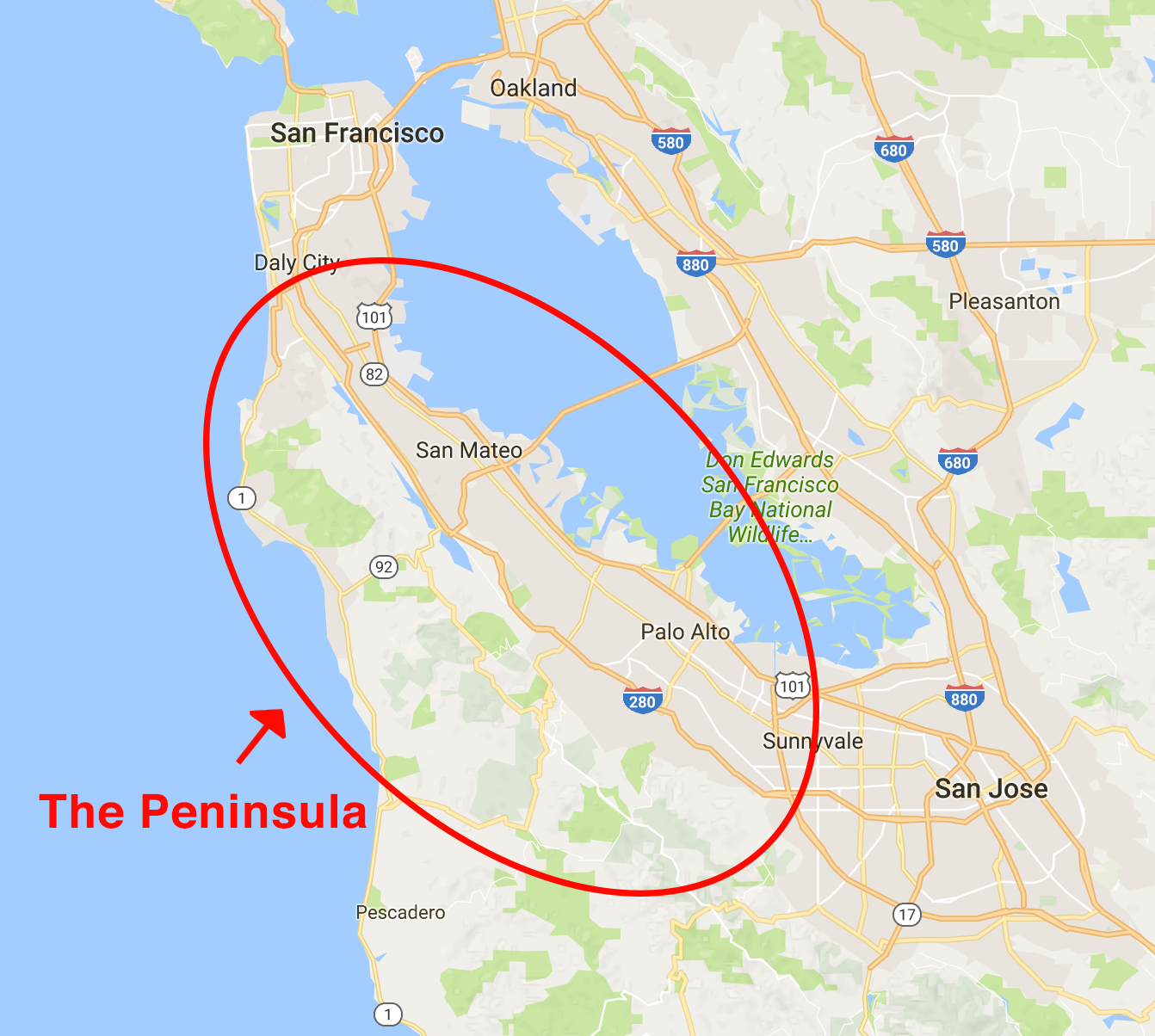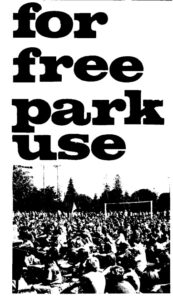All Things Must Pass
Happy anniversary
Released November 27, 1970
George Harrison’s “All Things Must Pass”
When Apple Records released George Harrison’s All Things Must Pass triple-album on November 27, 1970, many fans thought that George had finally written some songs. Though Beatle albums typically had a song or two by him, the Lennon-McCartney juggernaut ruled. He was seen as an important member only in terms of his playing.
In Rolling Stone’s January 21, 1971 review of the album, Ben Gerson described Harrison as the “…young, vulnerable George the craftsman, bent over his Gretch in concert, making sure that every lick was as good as it was on record; the perfectionist who would later dismiss the majority of Beatle music as “rubbish”; briefly Haight — Ashbury George, with eyeglasses, like Lolita’s, in the shape of valentines; humble George, Ravi Shankar’s student; holy George.”
In reality, Harrison had written most of the album’s songs in the 60s. He had said, “Well before I started, I knew I was gonna make a good album because I had so many songs and I had so much energy. For me to do my own album after all that — it was joyous. Dream of dreams.
What follows is a bit of the album’s recording chronology based on the booklet that came with its 50th anniversary re-release. as well as from the excellent Beatle Bible site. I have listed each song in the order it appeared on the original album.
All Things Must Pass
Studio Three Abbey Road
On May 26, 1970, George Harrison, Ringo, and Klaus Voorman recorded demos for 15 songs. The next day, Harrison alone played 15 more songs for Phil Spector, the person Harrison wanted to produce the album.
Seventeen of those 30 songs would became part of the first two of the eventual three disc release.
Spector would say, “I was working with John [Lennon] on the Plastic Ono Band. I went to George’s Friar Park…and he said, “I have a few ditties for you to hear.” It was endless! He had literally hundreds of songs and each one was better than the rest…”
All Things Must Pass
Side One
I’d Have You Anytime
Let me in here; I know I’ve been here
In November 1968, the Band had invited Harrison for Thanksgiving. Bob Dylan lived nearby in Byrdcliffe and by 1968 both musicians were choosing to retreat from fame’s glare.. Harrison, a Dylan fan (Blonde on Blonde was the only album Harrison had brought on his 1968 trip to India) went to visit Bob.
The two, unable to resist, took out their guitars and played riffs for each other. Harrison played his still incomplete I’d Have You Anytime and encouraged Dylan to contribute. The two prodigious talents combined and created I’d Have You Anytime which became the album’s opening track.
Begun on May 26 and completed on June 4, 1970.
George Harrison: vocals, guitar
Eric Clapton: lead guitar
Klaus Voormann: bass guitar
Alan White: drums
Uncredited: xylophone
My Sweet Lord
I really want to be with you.
George Harrison’s recording of My Sweet Lord (26 & 28 May 1970) was not the first one. In January 1970, he had been working with Billy Preston on his second album, Encouraging Words, (a great album that needs its own post). George gave Preston both My Sweet Lord and All Things Must Pass for the album which would come out two months before Harrison’s.
According to Harrison, he was “just thinking of a way to combine Hallelujah and Hare Krishna…” and that the inspiration was really the Edwin Hawkins Singers Oh Happy Day. Unfortunately, others thought he’d ripped off the Chiffon’s He’s So Fine.
George Harrison: vocals, backing vocals, slide guitar
Eric Clapton, Pete Ham, Tom Evans, Joey Molland: acoustic rhythm guitar
Billy Preston: piano
Klaus Voormann: bass guitar
Gary Wright: electric piano
Ringo Starr: tambourine
Andy White: drums
Mike Gibbins: tambourine
Bobby Whitlock: vocals
Uncredited: harmonium
Wah-Wah
Wah-wah–you made me such a big star.
A song’s inspiration varies wildly. In January 1969, the Beatles were involved with their Let It Be album. There was a lot of tension. Ringo had already “quit” (in 1968 and come back) and now George decided to do the same.
Obviously, he came back, too, but at home he wrote Wah-Wah. Harrison ‘s initial reaction after recording the song for his album was disappointment, but other voices disagreed and he grew to like it as well.
Recorded May 27 and 28, 1970.
George Harrison: guitar, vocals, backing vocals
Eric Clapton: guitar
Pete Ham, Tom Evans, Joey Molland: acoustic rhythm guitar
Klaus Voormann: bass guitar
Billy Preston, Gary Wright: keyboards
Ringo Starr: drums
Jim Price: trumpet
Bobby Keys: saxophone
Mike Gibbins: tambourine
Isn’t It A Pity (version one)
Somethings take so long, but how do I I explain?
George had written Isn’t It A Pity in 1966 and considered for inclusion on the Revolver album. It was recorded by the band in 1969 during the Let It Be sessions, but again was excluded.
He had even considered offering the song to Frank Sinatra (who did record Yesterday and Something).
Rolling Stone Magazine would accuse the song of borrowing from I Am the Walrus and Hey Jude. An impossibility, since Harrison had written the song before both songs.
Recorded May 26 and 29 and June 2, 1970.
George Harrison: vocals, backing vocals, slide guitar
Pete Ham, Tom Evans, Joey Molland: acoustic rhythm guitar
Klaus Voormann: bass guitar
Tony Ashton: piano
Billy Preston, Gary Wright: keyboards
Ringo Starr: drums
Mike Gibbins: tambourine
All Things Must Pass
Side Two
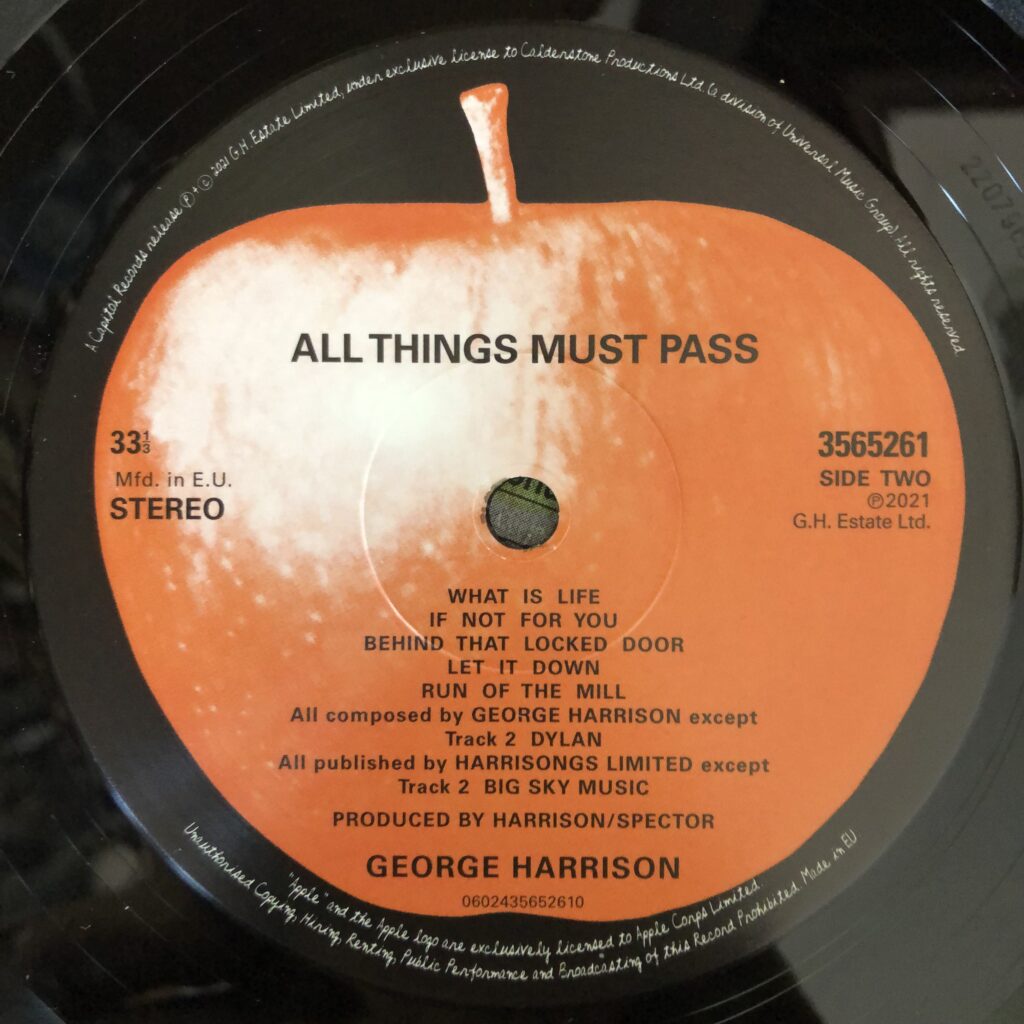
What Is Life
What I know I can do; if I give my love to everyone like you
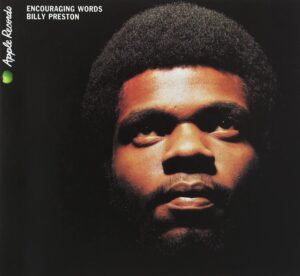 While George Harrison was producing That’s the Way God Planned It, Billy Preston’s first album, he wrote What Is Life for it. In fact, he wrote it in about 15 minutes on his way to Olympic Sound Studios, but Harrison decided it wasn’t right for the album.
While George Harrison was producing That’s the Way God Planned It, Billy Preston’s first album, he wrote What Is Life for it. In fact, he wrote it in about 15 minutes on his way to Olympic Sound Studios, but Harrison decided it wasn’t right for the album.
He recorded it on May 26, Jun 22 & 23, and July 3, 1970.
George Harrison: vocals, guitar
Eric Clapton: guitar
Pete Ham, Tom Evans, Joey Molland: acoustic rhythm guitar
Carl Radle: bass guitar
Bobby Whitlock: piano
Jim Price: trumpet
Bobby Keys: saxophone
Jim Gordon: drums
Mike Gibbins: tambourine
If Not For You
I’d be sad and blue if not for you.
Harrison recorded Bob Dylan’s If Not For You on May 27 and on June 4 & 5, 1970. It should again be noted how each of the album’s “regular” songs (as opposed to jams) was first recorded on two days: May 26 and May 27, 1970. In fact, it was the last of the 30 songs Harrison demoed. Who wouldn’t have wanted to be around the studio those two days!
By the way, those demos are available on the 50th anniversary release and remastering of the album.
This, though, was not the first time Harrison had recorded the song. He’d been with Dylan in New York’s Columbia Recording Studio on May 8 helping him record the song for his New Morning album.
George Harrison: vocals, acoustic guitar, dobro, harmonica
Klaus Voormann: bass guitar
Gary Wright: piano
Billy Preston: organ
Alan White: drums
Ringo Starr: tambourine
Behind That Locked Door
Please forget those teardrops.
Obviously Harrison and Dylan were close. In August of 1969 when Bob Dylan didn’t play Woodstock but did play the Isle of Wight Festival, Harrison wrote Behind That Locked Door while staying with Dylan on Wight.
Harrison loved the sound of Pete Drake’s pedal steel guitar on Bob Dylan’s Lay Lady Lay so much that Harrison hired Drake to come over and play on Behind That Locked Door as well as a few others.
As impressed as Harrison may have been with Drake, well, let’s let Pete tell the story an interview he did for Guitar Player Magazine. “His name, you know, just didn’t ring any bells-well, I’m just a hillbilly, you know (laughter). Anyway, I ended up going to London for a week where we did the album All Things Must Pass.”
And a second by the way, it was during the recording sessions that Pete met Ringo Starr, who later asked Pete to produce his solo album. It was recorded in Nashville in June of 1970.
George Harrison: vocals, guitar
Pete Drake: pedal steel guitar
Klaus Voormann: bass guitar
Gary Wright: piano
Billy Preston: organ
Alan White: drums
Let It Down
‘Though you sit in another chair I can feel you here.
Let It Down is another example of a Harrison song offered to, but rejected the Beatles.He wrote the song in late 1968 and showed the song to the others on the first day of the Let It Be sessions.
He tried again with the group and the second time included Billy Preston.
The All Things Must Pass album version includes Ringo and Billy, but also includes the nascent Derek and the Dominoes: Bobby Whitlock, Carl Radle, Jim Gordon, and Eric Clapton as well as old friend Klaus Voormann, Gary Wright (Spooky Tooth), Alan White, and three members of Badfinger.
Specifically:
George Harrison: vocals, backing vocals, guitar
Eric Clapton: backing vocals, guitar
Bobby Whitlock: backing vocals
Pete Ham, Tom Evans, Joey Molland: acoustic rhythm guitar
Carl Radle: bass guitar
Gary Wright: organ
Gary Brooker: piano
Jim Price: trumpet
Bobby Keys: saxophone
Jim Gordon: drums
The Dominoes “deal” was that they’d play on All Things if George allowed Phil Spector to produce some of their album.
Quite the lineup and quite a deal.
The song was demoed on May 27 and the full band recorded it on June 24, 1970.
Run Of The Mill
Everyone has choice, when to and not to raise their voices.
George wrote Run of the Mill shortly after the Let It Be sessions ended. He said of it, “I liked the words…. It was the first song I ever wrote that looked like a poem on paper.”
It was recorded on May 27 & 29 and June 24 & 30.
Many note that the song reflects Harrison’s frustration with the Beatles continued dismissal of his song offerings, yet his acceptance by such as Bob Dylan and Eric Clapton.
George Harrison: vocals, guitar
Carl Radle: bass guitar
Gary Wright: piano
Bobby Whitlock: harmonium
Jim Price: trumpet
Bobby Keys: saxophone
Jim Gordon: drums
All Things Must Pass
Side Three
Beware of Darkness
The pain that often mingles in your fingertips
Beware of Darkness was the last song George had written before recording the album and it was still in flux. He’d written it at home when some of his friends from the Radha Krishna temple were staying.
Like the other songs, he’d demoed it, this one on May 27. The group recording occurred on June 22 and 23, 1970 in Abbey Road’s Studio Three.
The song’s big sound is from the fact that there were two drummers, two bass players (Klaus Voorman, Carl Radle), and three guitarists (George, Eric Clapton, and Dave Mason).
Specifically:
George Harrison: vocals, guitar
Eric Clapton: electric guitar
Dave Mason: acoustic guitar
Klaus Voorman & Carl Radle: bass guitar
Bobby Whitlock: piano
Gary Wright: organ
Ringo Starr & Alan White: drums
Uncredited: xylophone
Apple Scruffs
I’ve watched you sitting there–seen the passers by all stare
According to a 2014 article by William Shaw in Rolling Stone Magazine, “The Apple Scruffs were a tiny but intense group of (mostly) young women who gained their name from the thick coats and sweaters they wore against the London cold, and from hanging around the Georgian doorstep of 3, Savile Row, London, the address of the Beatles’ Apple headquarters. This was their meeting place, from the late sixties up to the Beatle’s disintegration and even beyond. Even their names have become semi-legendary over the years: among the circle were the ringleader Margo who later became the Apple tea-girl, Sue-John, the Lennon fan, so called to distinguish herself from other Scruff Sues, Tommy – the gay Brooklynite – who loved the band, but, he told his fellow Scruffs, “not in that way.”
The Beatles Bible site quote’s Bobby Keys from Graeme Thomson’s Behind The Locked Door: “There was always a little knot of them. They weren’t fashion model types, they were just little girls – just kids. He always took time to have a word with them, and I seem to remember him going out with tea for them sometimes when it was cold. I was impressed with how caring he was about these girls. I’ve been around a lot of other folks who have quite a different way of dealing with people, let’s put it that way.”
George appreciated their dedication so much, he wrote this ode to and for them. He even invited those who were outside the studio one July 1970 July day to come in and listen. He told them, “Sit down. I’ve got something to play for you.” He told them the song would be on his album, but left as the song started.
That was George.
George Harrison: vocals, guitar, harmonica
Mal Evans: percussion
Ballad Of Sir Frankie Crisp (Let It Roll)
Fools illusions everywhere
I’m sure I had no idea who Frankie Crisp was when I first saw this title and then heard the song. I’d learned with Rubber Soul that lyrics are not what they seem to be, that lyrics are open to interpretation.
Even with the album’s 2021 booklet, I’m still not sure what the connection between the name of the song and the parenthetical title is, but there’s always the fallible omniscient internet
Songfacts says: This song was inspired by the English lawyer, Sir Frank Crisp (1843-1919), who was the original owner of Friar Park, which Harrison purchased in 1970. A keen horticulturist, he developed spectacular public gardens in his mansion’s grounds.
And that: The lyrics are derived from phrases inscribed around the grounds at Friar Park. The song has been described as a love song to the house made with its own words.
And as you may know already, the album’s cover photo is George on his Friar Park Estate.
George Harrison: vocals, guitar
Pete Drake: pedal steel guitar
Bobby Whitlock: piano
Billy Preston: organ
Gary Wright: electric piano
Klaus Voormann: bass guitar
Alan White: drums
Awaiting On You All
The Lord is waiting on you all to awaken and see
Despite the fact that the song’s germ simply began with George thinking, “You don’t need a…you don’t need a…” it took awhile to reach it’s studio delivery on June June 26 in Abbey Road Studio Two. 25 takes.
According to the Beatles Bible:
The first solo outings after the implosion of The Beatles all portrayed the former members’ key interests of the time. For John Lennon it was Primal Therapy and casting off the weight of his past; Paul McCartney celebrated his home life with his new wife Linda; and Ringo Starr performed an album of standards from his childhood.
For George Harrison, the primary quest was for spiritual contentment. He had all the riches and fame one could wish for, but his needs and desires transcended the earthly.
George Harrison: vocals, guitar
Eric Clapton: guitar
Klaus Voormann, Carl Radle: bass guitar
Jim Price: trumpet
Bobby Keys: saxophone
Jim Gordon: drums
All Things Must Pass
Daylight is good at arriving at the right time
The song’s inspiration came from Timothy Leary’s Psychedelic Prayers and Other Meditations in which was a translation of All Things Pass, a poem by Lao Tzu.
George also said that “When I wrote All Things Must Pass I was trying to do a Robbie Robertson–Band sort of tune and that is what it turned into.”
And in his mind, he heard Levon Helm singing it.
This was another song that the Beatles had rehearsed during the 1969 Let It Be sessions, but not used.
George Harrison: vocals, guitar
Eric Clapton: backing vocals, guitar
Pete Drake: pedal steel guitar
Bobby Whitlock: backing vocals, piano
Klaus Voormann: bass guitar
Ringo Starr, Jim Gordon: drums
Side Four
I Dig Love
But you should give love, and try to live love
As a Beatle, George Harrison was not a slide guitar player. On December 1, 1969 Harrison attended the Delaney and Bonnie Bramlett concert at the Albert Hall in London. The following night he joined them on stage in Bristol, for his first stage appearance since The Beatles’ final concert on 29 August 1966.
Before the gig, Delaney handed a slide guitar to George and said, “Oh, you play the slide part.” Dave Mason had played it on their record. And so the slide guitar and what became part of his signature sound from that point on entered his music.
The demo version of the song (May 26, 1969) was more upbeat than the recording they did on June 2.
George Harrison: vocals, guitar
Eric Clapton, Dave Mason: guitar
Klaus Voormann: bass guitar
Bobby Whitlock: organ
Gary Wright: electric piano
Billy Preston: piano
Ringo Starr, Jim Gordon: drums
Art of Dying
There’ll come a time when all of us must leave here
Much of the spiritual basis in George Harrison’s music can be traced back to his Within You and Without You which appeared on the Sgt Pepper album. The sound had first been heard on Norwegian Wood.
The idea behind Art of Dying, which Harrison wrote in 1966, can be found in The Psychedelic Experience: A Manual Based on the Tibetan Book of the Dead by Timothy Leary, Ralph Metzner, and Richard Albert (Ram Das).
George said, “…everybody’s worried about dying, but he cause of death, which nobody can figure out, unless you’re diseased, but the cause of death is birth. So, if you don’t wanna die, don’t get born.”
Art Of Dying is one of the album’s tracks which deployed Spector’s Wall of Sound to its greatest extent. Recording began on 29 May 1970 , but the final version was take 26, taped on 1 July.
George Harrison: vocals, guitar
Eric Clapton: lead guitar
Carl Radle: bass guitar
Bobby Whitlock: piano
Gary Wright: electric piano
Billy Preston: organ
Jim Price: trumpet
Bobby Keys: saxophone
Jim Gordon: drums
Phil Collins: congas
Isn’t It A Pity (Version Two)
After recording Isn’t It A Pity in various ways, Harrison decided he didn’t like the first more up-tempo version and slowed it down. Later, he revised his evaluation and decided he liked both versions. Thus he included both on the album.
From Beatles Bible: The song was one of the album’s oldest; Harrison wrote it in 1966, found no outlet for it in The Beatles. He attempted to introduce the group to it on 25 and 26 January 1969, towards the end of the Get Back/Let It Be sessions, but to no avail.
Recorded on May 27, June 24, and July 1, 1969.
George Harrison: vocals, backing vocals, slide guitar
Eric Clapton: electric guitar
Pete Ham, Tom Evans, Joey Molland: acoustic rhythm guitar
Carl Radle: bass guitar
Tony Ashton: piano
Bobby Whitlock: organ
Ringo Starr: drums
Mike Gibbins: tambourine
Hear Me Lord
There’s no place that you’re not in
George wrote the song over a weekend and presented it to the Beatles during their Let It Be session on January 6, 1969. The song was declined.
Beatles Bible: On that date…”He first played the song on an acoustic guitar, then several times on an electric guitar with wah-wah pedal. An attempt at putting forward the song ‘All Things Must Pass’ on the same day was met with similar indifference by the rest of The Beatles.”
Hear Me Lord is the last song on the main part of the album. He did not mention it in his autobiography, I Me Mine, and only performed it live on one known occasion.
George Harrison: vocals, guitar
Eric Clapton: guitar
Carl Radle: bass guitar
Gary Wright: piano
Bobby Whitlock: organ
Billy Preston: keyboards
Jim Price: trumpet
Bobby Keys: saxophone
Jim Gordon: drum
All Things Must Pass
Side Five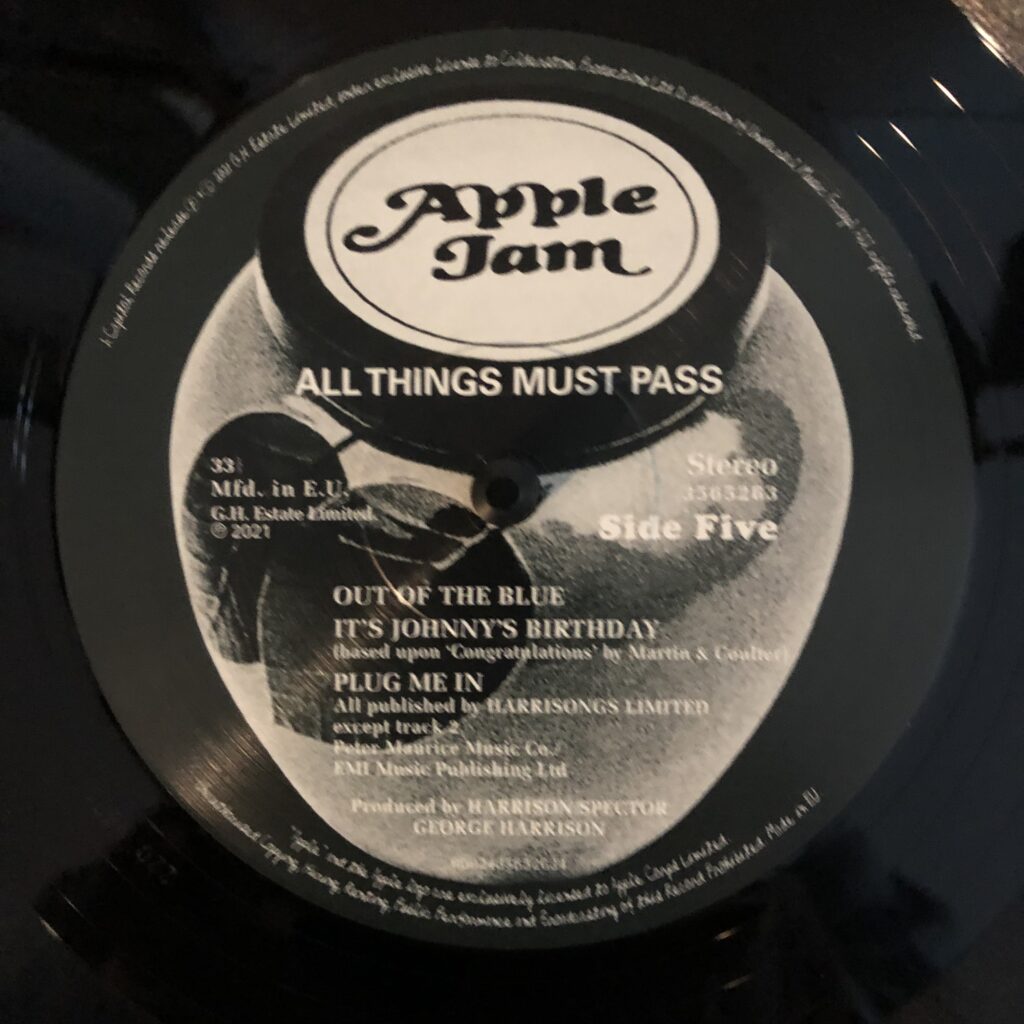 Out of the Blue
Out of the Blue
As if we hadn’t had enough outstanding music from the too-often dismissed George Harrison, the album gave us a bonus third disc: Apple Jam. He wanted it to be considered as a separate part of the whole package and thus had a different label than the first two discs.
As mentioned above, Eric Clapton et al were in the process of creating the album that would eventually become Layla and Other Assorted Love Songs and mainly recorded in Miami, Florida with Tom Dowd and not Phil Spector. Just as the band members had been an integral part of the All Things Must Pass album, George was in the studio with them.
Luckily for us, recording engineer Phil McDonald was around and astute enough to record the jams that the musicians did between doing takes.
On 2 July 1970, he recorded what he labeled ‘Jam 3’ . It would became ‘Out Of The Blue’ and was based around a single-chord riff, and featured an extended solo by saxophonist Bobby Keys. [Beatles Bible]
George Harrison: guitar
Klaus Voormann: guitar
Carl Radle: bass guitar
Gary Wright: organ
Bobby Whitlock: piano
Jim Price: trumpet
Bobby Keys: saxophone
Jim Gordon: drums
It’s Johnny’s Birthday
October 9 is John Lennon’s birthday. On October 7 (1970), George was in Studio Three mixing songs for the album when he recorded It’s Johnny’s Birthday for John.
As much as the relationships among the Beatles had deteriorated, it is interesting to see George’s acknowledgement of John’s birthday, even if he borrowed the tune from Cliff Richard’s “Congratulations.”
From Beatles Bible: Although originally given a composer credit to George Harrison, the song takes its melody from Cliff Richard’s 1968 hit ‘Congratulations’. In December 1970, that song’s composers Bill Martin and Phil Coulter filed a claim for royalties, and subsequent pressings of the album had the credits amended to acknowledge Martin and Coulter’s contributions.
George Harrison: vocals
Mal Evans: vocals
Eddie Klein: vocals
‘It’s Johnny’s Birthday’ was the only one of the five Apple Jam tracks to feature vocals. The backing track features a fairground organ and percussion backing, although no performer credits are known.
Plug Me In
On June 18, 1970, Phil Spector and George Harrison were in Studio Three with Derek and the Dominoes. It was their first recording session. That day, Phil produced Tell the Truth and Roll It Over which would become the band’s first single. George and Dave Mason were on guitar.
:format(jpeg):mode_rgb():quality(90)/discogs-images/R-6452463-1419606542-4733.jpeg.jpg)
That same day, the jam that became Plug Me In happened.
George Harrison: guitar
Eric Clapton, Dave Mason: guitar
Carl Radle: bass guitar
Bobby Whitlock: piano
Jim Gordon: drums
All Things Must Pass
Side Six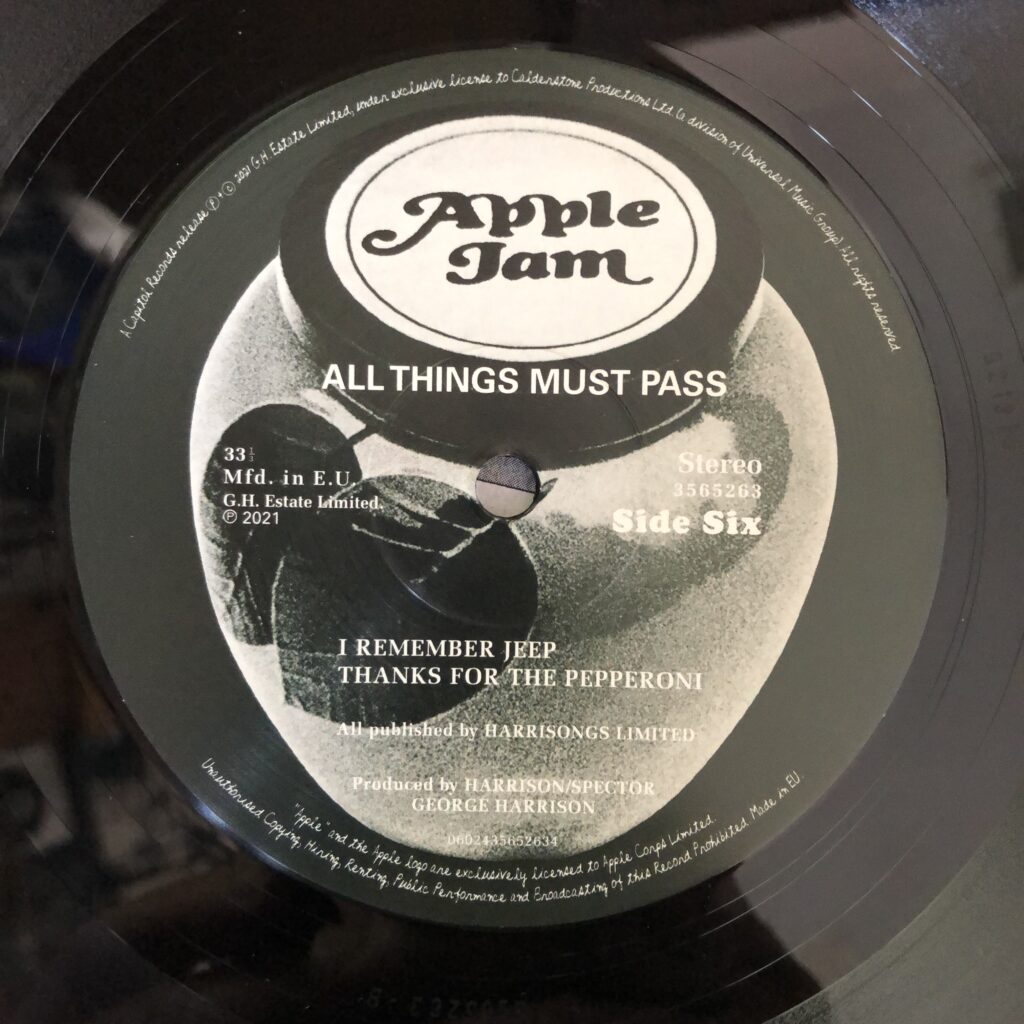
I Remember Jeep
This jam’s recording first began on March 29, 1969 during a preliminary session for Billy Preston’s first Apple album.
On 12 May that year – at which point the track was titled Jam Peace – Harrison, John Lennon, and Yoko Ono overdubbed handclaps at EMI Studios, and Harrison added the Moog part live as the final mix was being done.
Had the song remained titled Jam Peace and credited to the Plastic Ono Band (as it had), it would have been the first Plastic Ono Band recording.
George was later credited and the song’s new title referred to Eric Clapton’s dog.
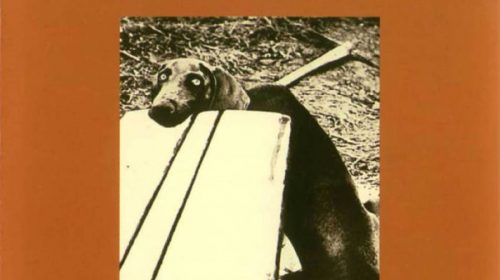
George Harrison: guitar
Eric Clapton: lead guitar
Klaus Voormann: bass guitar
Billy Preston: organ
Bobby Whitlock: piano
Ginger Baker: drums
Thanks For the Pepperoni
On June 14, 1970, Derek and the Dominoes made their first public appearance at the Lyceum Theatre in London. Dave Mason was the second guitarist, but later Duane Allman would famously become that person.
This jam was done the same day as Plug Me In, June 19, 1970.
According to Beatles Bible, the title was taken from ‘Religions, Inc.’, the final track on the 1959 comedy album The Sick Humor Of Lenny Bruce.
One of his last comments in the bit was “…and thanks for the pepperoni.” Perhaps it echoes the more famous line that Catskill, NY comedians closed their sets with: “Thank you. I’m here all week. And try the veal.”
George Harrison: guitar
Eric Clapton, Dave Mason: guitar
Carl Radle: bass guitar
Bobby Whitlock: piano
Jim Gordon: drums
